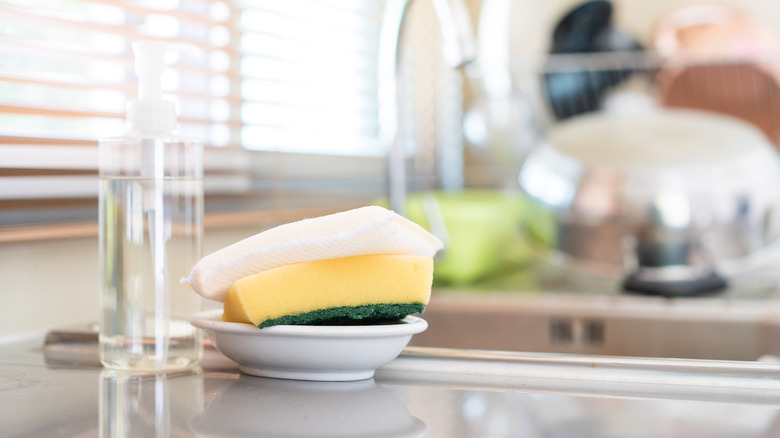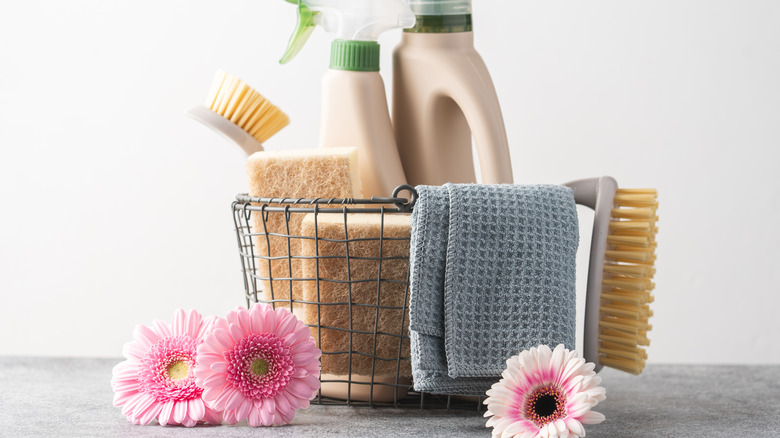Here's How Often You Should Be Replacing Your Kitchen Sponges
Though your sink may look sparkling clean after you tidy up post-meal, there's one item that many people forget about cleaning entirely — the kitchen sponge. You used it to soap up your dishes and scrub out your sink, so it's probably pretty clean itself, right? Well, not exactly. In a 2017 study from Scientific Reports, researchers found nearly 82 billion bacteria per cubic inch on used kitchen sponges — talk about an unexpectedly grimy addition to your kitchen! The fact is, you should probably be replacing that sponge a whole lot more often than you already are, so here's what you need to know regarding the frequency with which you're supposed to be swapping out that sponge.
According to Today, you should be tossing that dirty sponge and grabbing a new one every week — that's what the scientists in that bacteria-revealing study suggested. Martha Stewart is a bit more lenient, advocating for swapping in a fresh sponge every two weeks (at least, unless you notice any odors or the sponge begins to deteriorate, in which case you should make the swap ASAP).
And, as Well + Good explains, another key thing to consider regarding when to toss that sponge and get a new one is exactly how often you use it; individuals who are constantly whipping up home-cooked meals and hand-washing pots will likely need to change their kitchen sponge a lot more often than takeout warriors who rarely wash more than a few pieces of cutlery.
How to clean kitchen sponges in a pinch — and alternatives
If you really don't want to run to the store to get a new pack of sponges, or perhaps you just want to make sure your regularly changed sponge is squeaky clean and harboring as few bacteria as possible, there are a few things you can do to clean them.
The first trick, which you may have heard of previously, is to microwave the sponge. As Martha Stewart explains, you can place a wet sponge in the microwave for about one minute, allowing the heat to do its job sanitizing the sponge to prolong its use a little more (or just keep it as clean as possible). You might also choose to place it in the dishwasher on the "heated dry" setting, as per Well + Good, which does nearly the same thing as the microwave trick. Or, you could even soak the sponge in diluted bleach to zap those germs.
If merely learning how many bacteria could be lurking in your innocuous kitchen sponge causes you to reconsider them entirely, don't worry — there are some great alternatives. For example, certified home cleaning technician Donna Smallin Kuper swears by using cotton dishcloths instead, as they dry much faster than a thick slab of sponge. There are also plenty of eco-friendly alternatives on the market, as per Simple Most, from silicone sponges to loofahs to Swedish dishcloths, which are essentially an absorbent hybrid between a cloth and a sponge.

